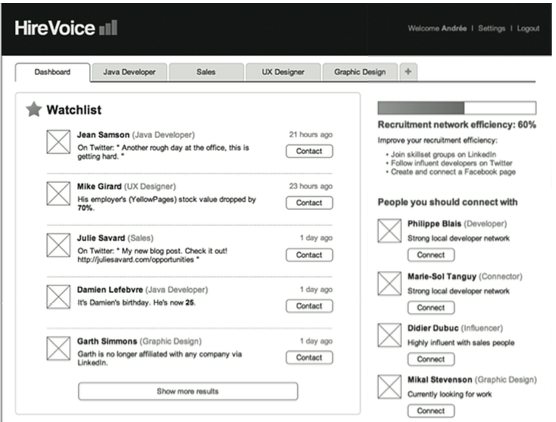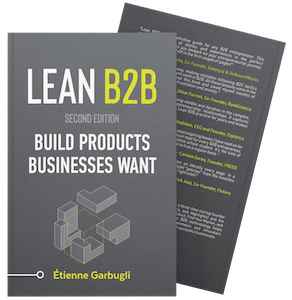Version 2.1 was actually the first version of our product… It was all about perception. – Michael Wolfe, Entrepreneur and Investor
The term Minimum Viable Product (MVP) was coined by entrepreneur Frank Robinson and popularized by Eric Ries to identify the version of a new product which allows a team to collect the maximum amount of validated learning about customers with the least effort.
What’s a Minimum Viable Product?
An MVP is the quickest thing you can make to learn about your riskiest hypotheses; it can be anything from mockups, low-fi wireframes to a fully functional product. Contrary to the name, it doesn’t have to be a product in the traditional sense (see Psykler case study). The crucial thing is to have something to show — a demo.
An early Minimum Viable Product for HireVoice was a fully clickable Axure prototype
Showing your prospects an MVP is the first demonstration of your ability to deliver a solution. Before you show them anything, they don’t know whether your team is going to perform. Can you actually put a solution together?
What Your MVP Should Communicate
The three things that your Minimum Viable Product must say about your B2B startup are:
- You can solve this problem
You have the technical know-how to create a solution to the problem. This MVP is just the tip of the iceberg. - You can provide the value they seek
understood the problemYou and the value sought by the company. This product will provide real benefits. - You’re different
You’re better than the current solution or the solutions on the company’s radar. You can provide something they don’t currently have.
With MVPs, less is more. An MVP with just a few screens will get prospects to fill the gaps more than a full-fledged application; prospects will do the work of imagining the rest of the solution.
Make sure the first MVP your prospects see says the right things about you.
More on the Minimum Viable Product
- What’s Your Startup’s Minimum Viable Vision?
- How to Reengage Prospects When Your MVP is Ready
- Why Entrepreneurs Need to Fully Commit to Their MVPs
Download the First 4 Chapters Free
Learn the major differences between B2B and B2C customer development, how to think about business ideas, and how to assess a venture’s risk in this 70-page sampler.
Working on a B2B Startup?
Learn B2B customer development with our free email course:



